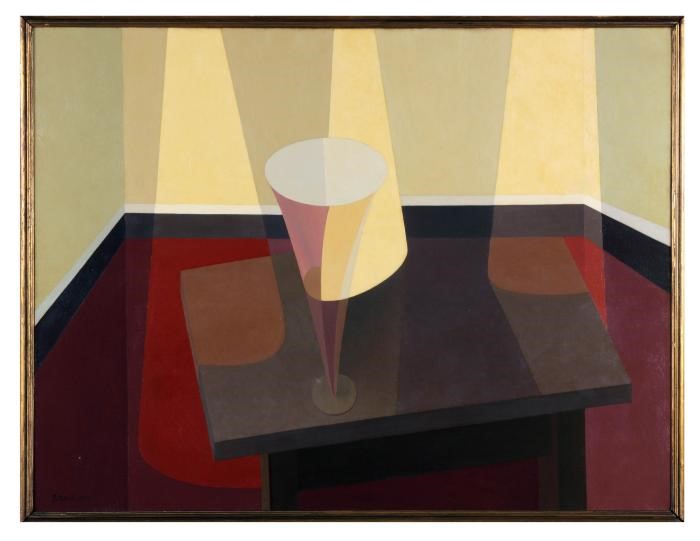Emilio Pettoruti (La Plata, 1894 – Paris, 1971). Argentine painter. During his years in Europe (1913-1924), he came into contact with the main avant-garde schools of the countries he visited; Through the cubism of Picasso and Braque and the futurism of Marinetti he approached abstract art, maintaining an unstable balance between abstraction and representation. It is difficult, however, to classify his work, whose most outstanding characteristics are, along with the constant presence of cubism, the humanization of objects and stars (the sun) and the classically balanced background of his painting. . After studying fine arts in his hometown, Emilio Pettoruti began his activity as a caricaturist. Granted a scholarship by the government of the province of Buenos Aires, he moved to Italy in 1913 and there studied painting and art history in Florence; In Italy he met and was influenced by the Futurists (Giacomo Balla, Umberto Boccioni, Carlo Carrà and Gino Severini, among others), with whom he organized some exhibitions, but he also toured the country’s museums, studying the Renaissance masters. Later he came into contact with the most important avant-garde trends of the time in France (especially the synthetic cubism of Juan Gris), Austria and Germany, countries in which he held new exhibitions. Returning to Argentina, he introduced the aesthetic premises of Futurism and Cubism into pictorial circles, not without causing a stir among conservative critics and artists. It would be this last current that would prevail in his creation in works such as Pájaro de luz, where a neat interpretation of cubism can be seen with a tendency towards the never achieved abstraction. Although late, Pettoruti offered a unique interpretation of Cubist art and became one of the most notable representatives of this trend in Latin America. In Argentina he founded and directed the magazine Crónica de Arte and was twice director of the Museum of Fine Arts of La Plata. In 1941 he visited the United States, where he presented his creations in various exhibitions organized by the San Francisco Museum of Art. In 1953 he settled permanently in Paris.


 Pettoruti Emilio
Pettoruti Emilio